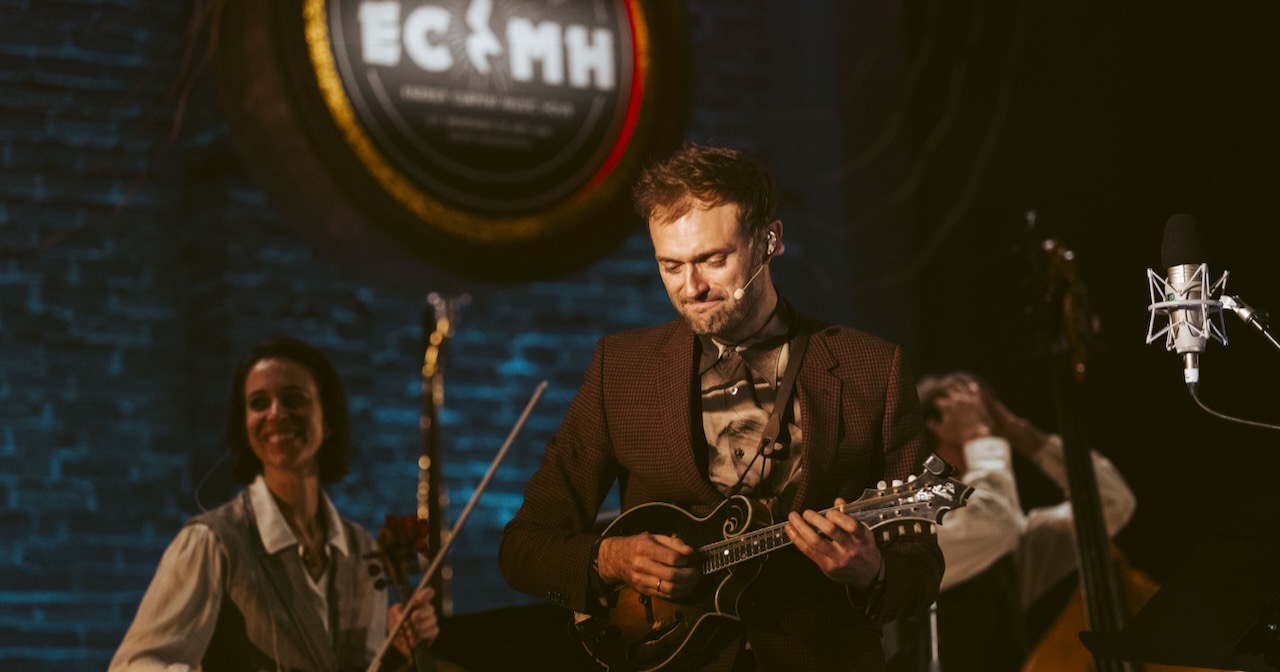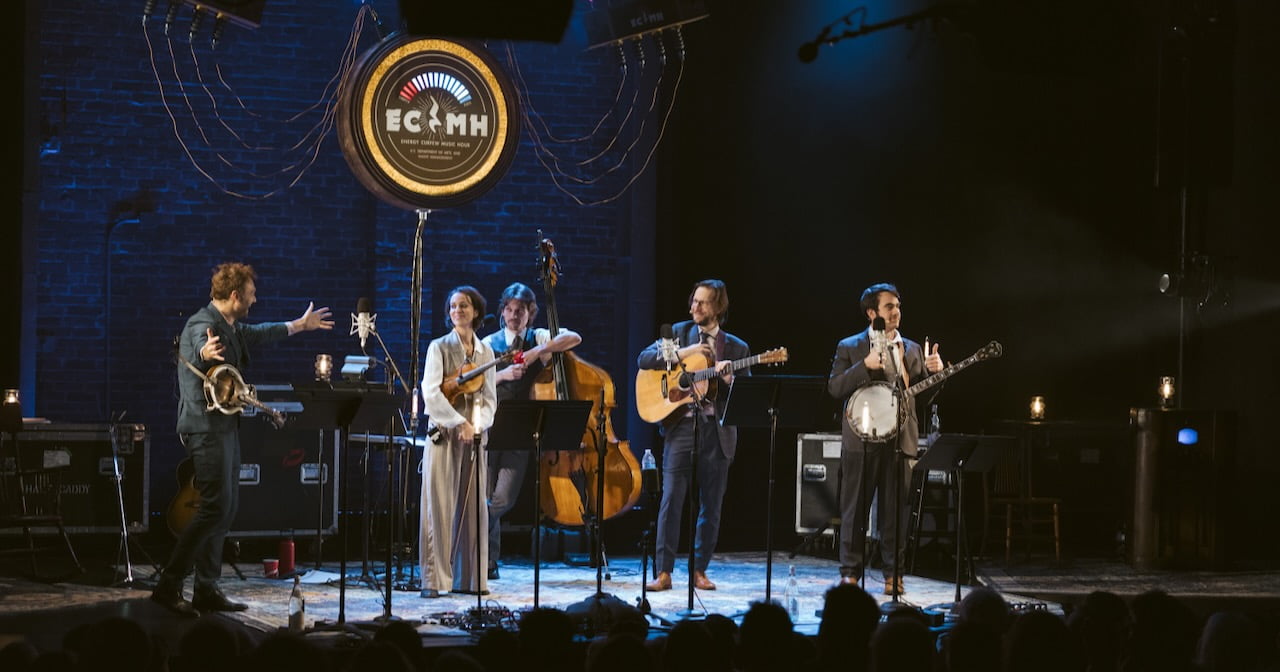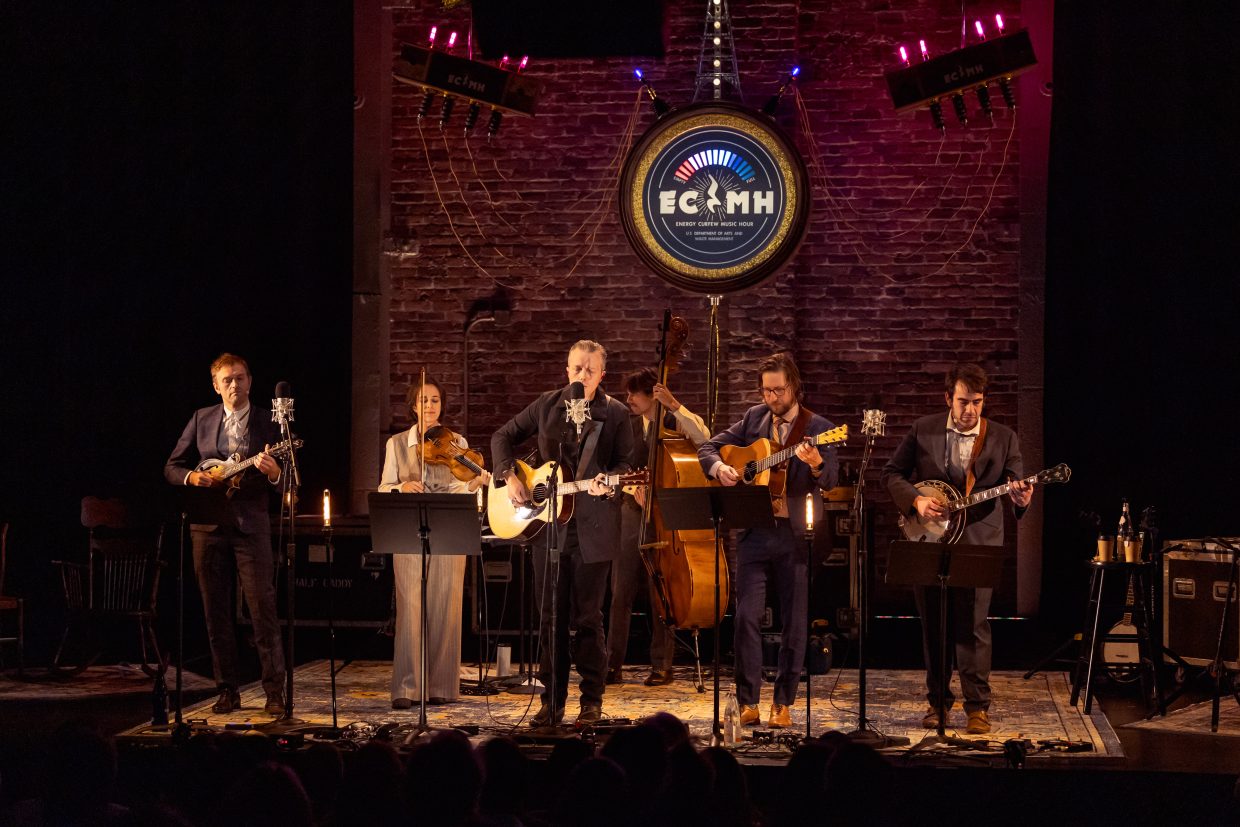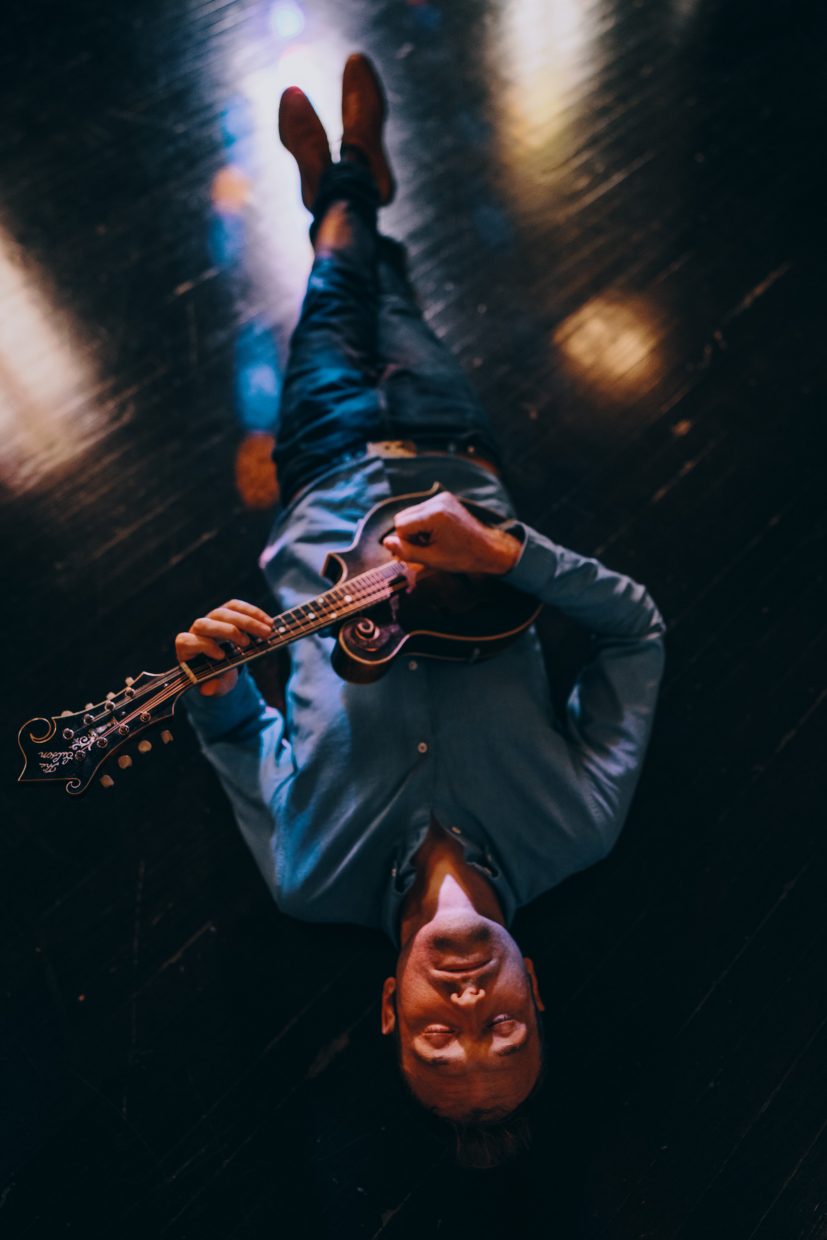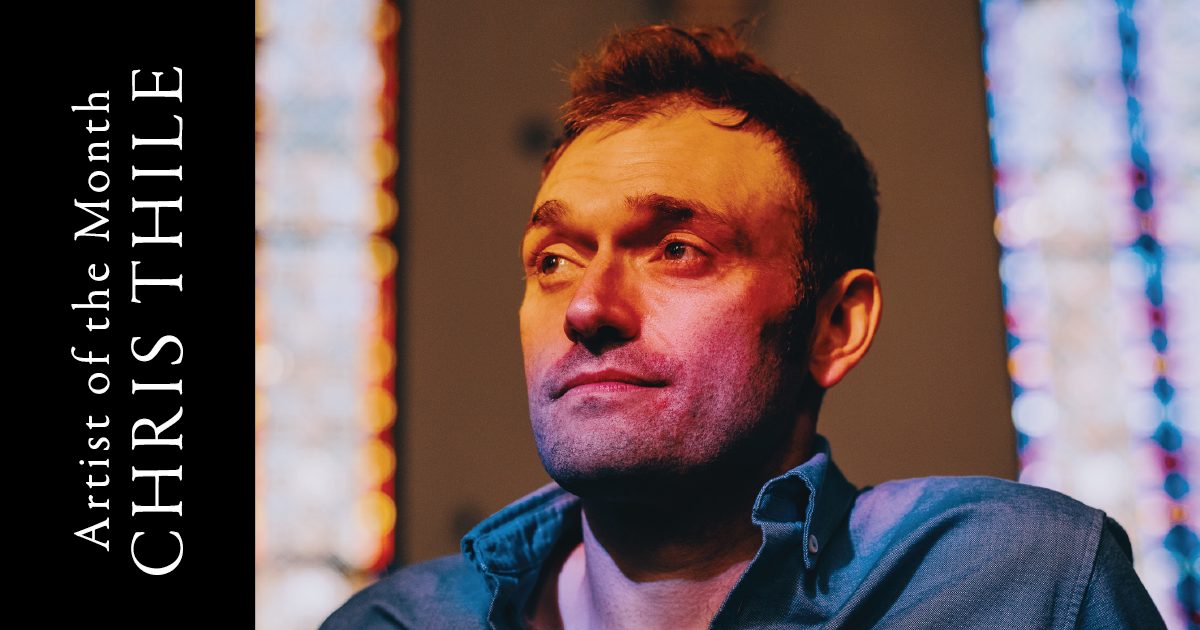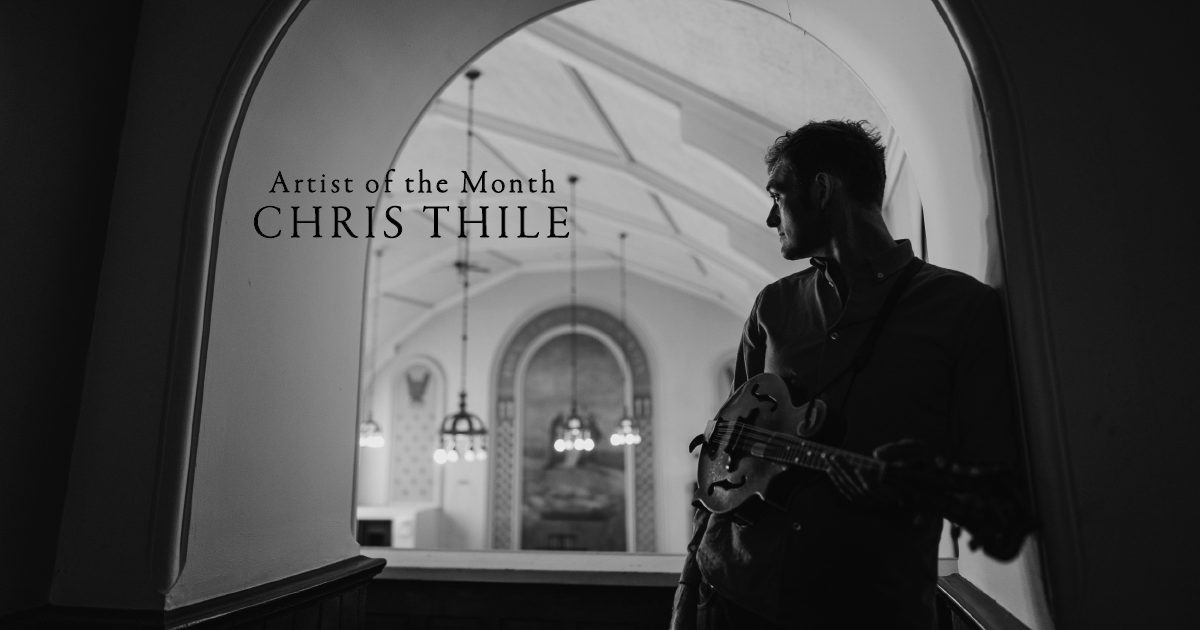Punch Brothers’ new audio-based variety show, The Energy Curfew Music Hour, takes listeners to a fictitious, not-so-distant future where, as the show materials describe, “diminishing resources and extreme weather have ushered in a worldwide effort to ration electricity. America has instituted a weekly ‘energy curfew’ where the power grid goes down completely and we all live electricity-free for 24 hours. The Energy Curfew Music Hour hits the airwaves an hour before the lights go out while the nation tunes in and turns off together before the Dark Day.”
The Audible exclusive, eight-episode series was recorded in front of a live audience at the Minetta Lane Theatre in New York in early 2024 and features a cavalcade of all-star performances backed by Punch Brothers, who serve as co-hosts and house band.
BGS executive director Amy Reitnouer Jacobs spoke to Punch Brothers’ frontman Chris Thile about the show and what’s next for the band.
What a good way to start my week, chatting with you! I’d love to start by hearing how The Energy Curfew Music Hour started.
Chris Thile: [My wife, Claire Coffee] and I came up with the idea a long time ago… originally it was like a show within the show for Live From Here.
We always thought maybe two-thirds of the way in the show, we would all of a sudden flash-forward to a future that was like this. And we’d gather round one microphone, because I’ve always loved the sounds of those old variety shows and their campy-ness.
And then of course, practically speaking, there’s not much of a platform for acoustic music out there. That was the thing I missed the most on Live From Here: I was obliged to at least try to concern that show with the width and breadth of the music being made in the world, regardless of aesthetic.
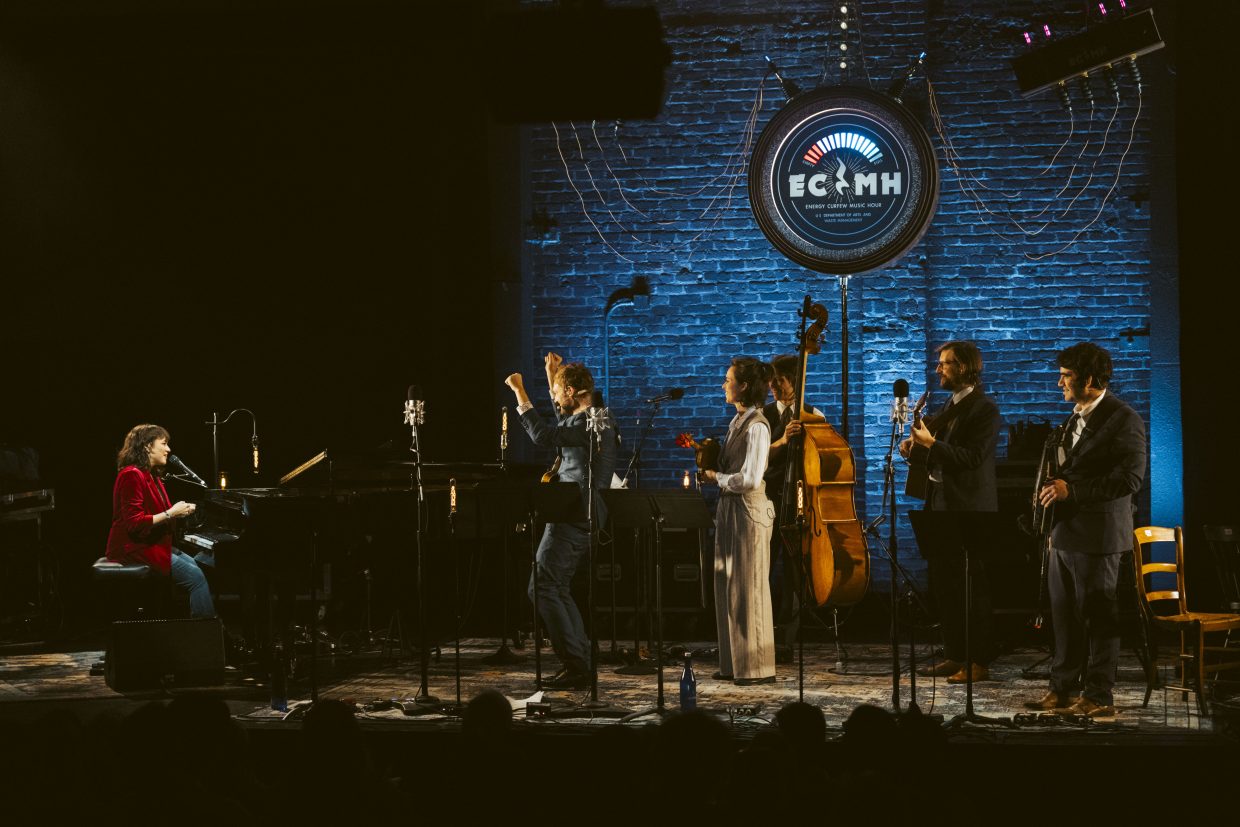
There’s something in what you mentioned about old-time radio shows with one microphone. When you think about when those were popular, it was the Dust Bowl, the Depression, a time that was really hard for most people. And the radio brought everyone together. So, in an age where we are so splintered as a society, I find [Energy Curfew Music Hour] very comforting. But there are elements of dark humor throughout too… am I reading too much into it?
Oh, no you’re right on it. There’s a certain aspect we always talked about, trying to strike the balance between shameless optimism and at the same time as I think it is really staring the monster [of reality] in the face. The extent to which we’ve imagined life has changed in a very short amount of time is huge. None of us have pseudonyms. We’re all [playing ourselves], so it can’t be that far in the future.
The extent to which we’ve imagined that life has changed is dramatic and potentially traumatic. And there’s some gallows humor throughout that. But despite taking place in this “dystopian future,” there’s nothing actually futuristic about the show. We wanted it to feel like a little bit of escapism, but a little bit real too.
Yeah, we know that change happens very fast in our world today. It’s not that hard to put yourself in those shoes when you’re listening.
That’s good to hear. Claire and the band and I keep talking about the increased emphasis on collaboration, compared with Live From Here, which was more just “Here are some acts that we love…” But those acts coexisting or working with me or the band … those were few and far between on that show, whereas on this show, it’s every episode. That’s also something of an analogy for the kind of thing we have to do just as human beings, not just as musicians, to effect the kind of change that we’re all hoping to see [in the world].

Can you talk a little more about working with Claire? I know you guys have worked together on Attention!, [a new narrative live show for mandolin and orchestra], which you’re taking more places now. What is your process like being married and collaborating?
I think I realized [during the pandemic] how shamelessly I had used Claire’s incredible taste as a sounding board for just about everything I’d done since we met. So I hired her to produce the solo record I made, Lay Songs. Then I hired her for Attention! and she helped me tell the story of how I met Carrie Fisher on a rooftop bar in San Diego in my mid-twenties, in what ended up being a really silly story, but also a very foundational experience for me in many ways.
When you’re telling a story like that – really when you’re working on any art – you get so inside of the thing, it’s very difficult to know how it’s coming across or if any of the stuff that’s so clear to you is landing with any other human. Claire is one of the very few people in my life who has absolutely no problem telling me when I’m full of shit, and it can be intense, but it invariably yields a better result.
So, when a couple people had asked me whether I wanted to do something like Live From Here again, I thought about it for a little while and remembered Claire’s and my idea for a show within a show. I asked Claire whether she would be interested in trying to make that a whole show and then fairly soon after that, the idea of Punch being the house band and co-hosts with me materialized and it was really off to the races.
It all felt very comfortable and natural. Claire is not a musician by trade; she’s an actor and writer and now director, and she’s always been the person that all her writer friends go to for their first round of notes. She has an extraordinary ability to strip away and identify what’s in between the writer and their audience – of what’s getting in the way. We’ve benefited a lot from that.
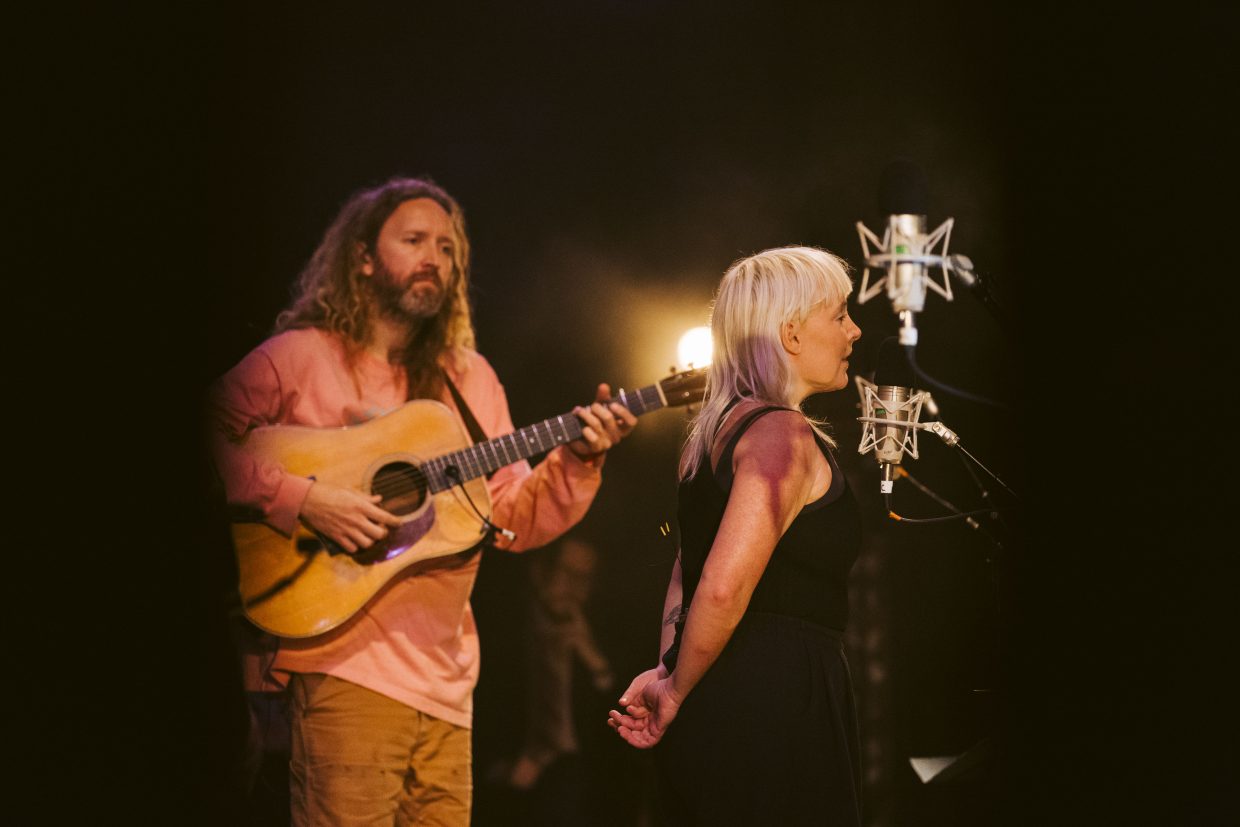
You’ve got some incredible names in this first season as guests – Norah Jones, Lake Street Dive, Jon Batiste, Kacey Musgraves, and James Taylor, just to name a few. Who brought the most surprising acoustic performance to the show?
Sylvan Esso came in and were really excited to not do what they normally do. To be there with them using Punch Brothers, wielding us like a laptop and basically muting and unmuting us, but all in analog! I think that was a moment of proof-of-concept for me. When we did that, I found myself cackling with surprise and delight. I hadn’t suspected that it would crack the show open to a whole other level.
You’re premiering some new Punch Brothers songs on the series too. Is there something else cooking for the band? What’s ahead now that you’ve added Brittany Haas to the lineup?
The band feels very, very new. We’re in uncharted territory and it’s so interesting. Four-fifths of the band is the same. You change one component and it feels completely new in the writing room, in the rehearsal room, and on stage. At this stage in the band’s career, that’s really interesting. So yes, there are new Punch Brothers songs and they’re being written specifically for Energy Curfew now, but of course, with an eye towards whatever’s coming next.
Season One of The Energy Curfew Music Hour is out now via Audible and is available to stream for free for Amazon Prime members. Discover more about the show here.
Photo Credit: All photos by Avery Brunkus, courtesy of Audible.
